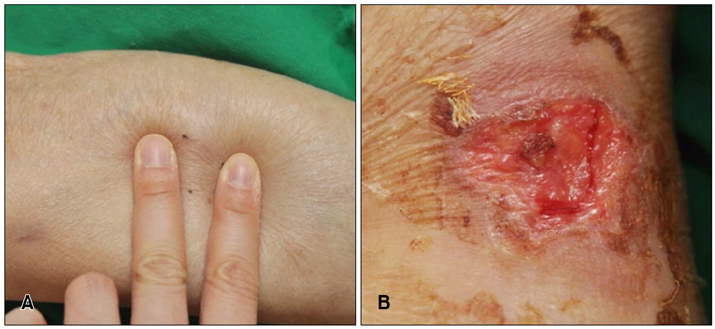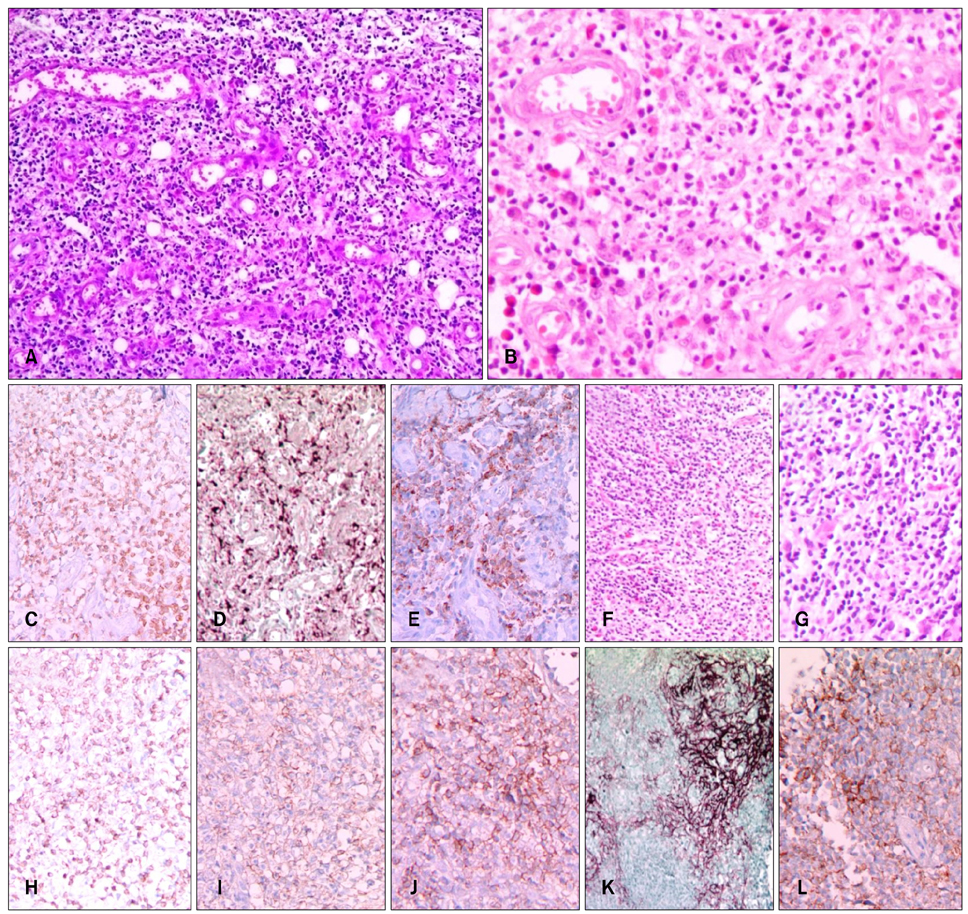Ann Dermatol.
2016 Jun;28(3):391-393. 10.5021/ad.2016.28.3.391.
Histiocytic Infiltrate in Angioimmunoblastic T-Cell Lymphoma with Cutaneous Nodules and Progressive Ulceration: A Rare Manifestation
- Affiliations
-
- 1Department of Dermatology, Hallym University Sacred Heart Hospital, Anyang, Korea. dermakkh@naver.com
- KMID: 2164652
- DOI: http://doi.org/10.5021/ad.2016.28.3.391
Abstract
- No abstract available.
MeSH Terms
Figure
Reference
-
1. Balaraman B, Conley JA, Sheinbein DM. Evaluation of cutaneous angioimmunoblastic T-cell lymphoma. J Am Acad Dermatol. 2011; 65:855–862.
Article2. Roncador G, Verdes-Montenegro JFG, Tedoldi S, Paterson JC, Klapper W, Ballabio E, et al. Expression of two markers of germinal center T cells (SAP and PD-1) in angioimmunoblastic T-cell lymphoma. Haematologica. 2007; 92:1059–1066.
Article3. Scarabello A, Leinweber B, Ardigó M, Rütten A, Feller AC, Kerl H, et al. Cutaneous lymphomas with prominent granulomatous reaction: a potential pitfall in the histopathologic diagnosis of cutaneous T- and B-cell lymphomas. Am J Surg Pathol. 2002; 26:1259–1268.4. Farinha P, Masoudi H, Skinnider BF, Shumansky K, Spinelli JJ, Gill K, et al. Analysis of multiple biomarkers shows that lymphoma-associated macrophage (LAM) content is an independent predictor of survival in follicular lymphoma (FL). Blood. 2005; 106:2169–2174.
Article5. Steidl C, Lee T, Shah SP, Farinha P, Han G, Nayar T, et al. Tumor-associated macrophages and survival in classic Hodgkin's lymphoma. N Engl J Med. 2010; 362:875–885.
Article
- Full Text Links
- Actions
-
Cited
- CITED
-
- Close
- Share
- Similar articles
-
- Primary Cutaneous Monomorphous Lymphoma: A Report of 3 Cases
- A case of angioimmunoblastic T cell lymphoma in a patient with ichthyosis
- A Case of Angioimmunoblastic T-cell Lymphoma Involving the Ipsilateral Parotid and Lateral Neck
- A Case of Pure Red Cell Aplasia Associated with Angioimmunoblastic T-cell Lymphoma
- A Case of Extranodall NK/T-cell Lymphoma, Nasal type



